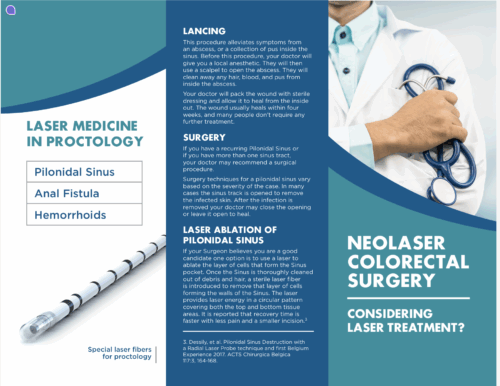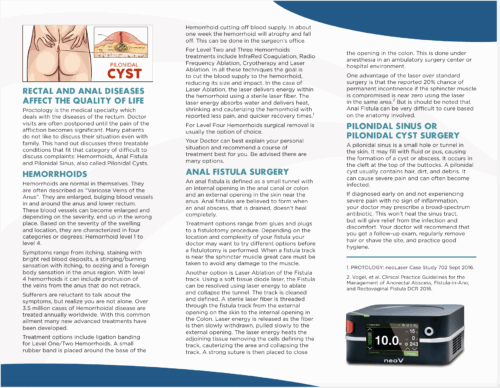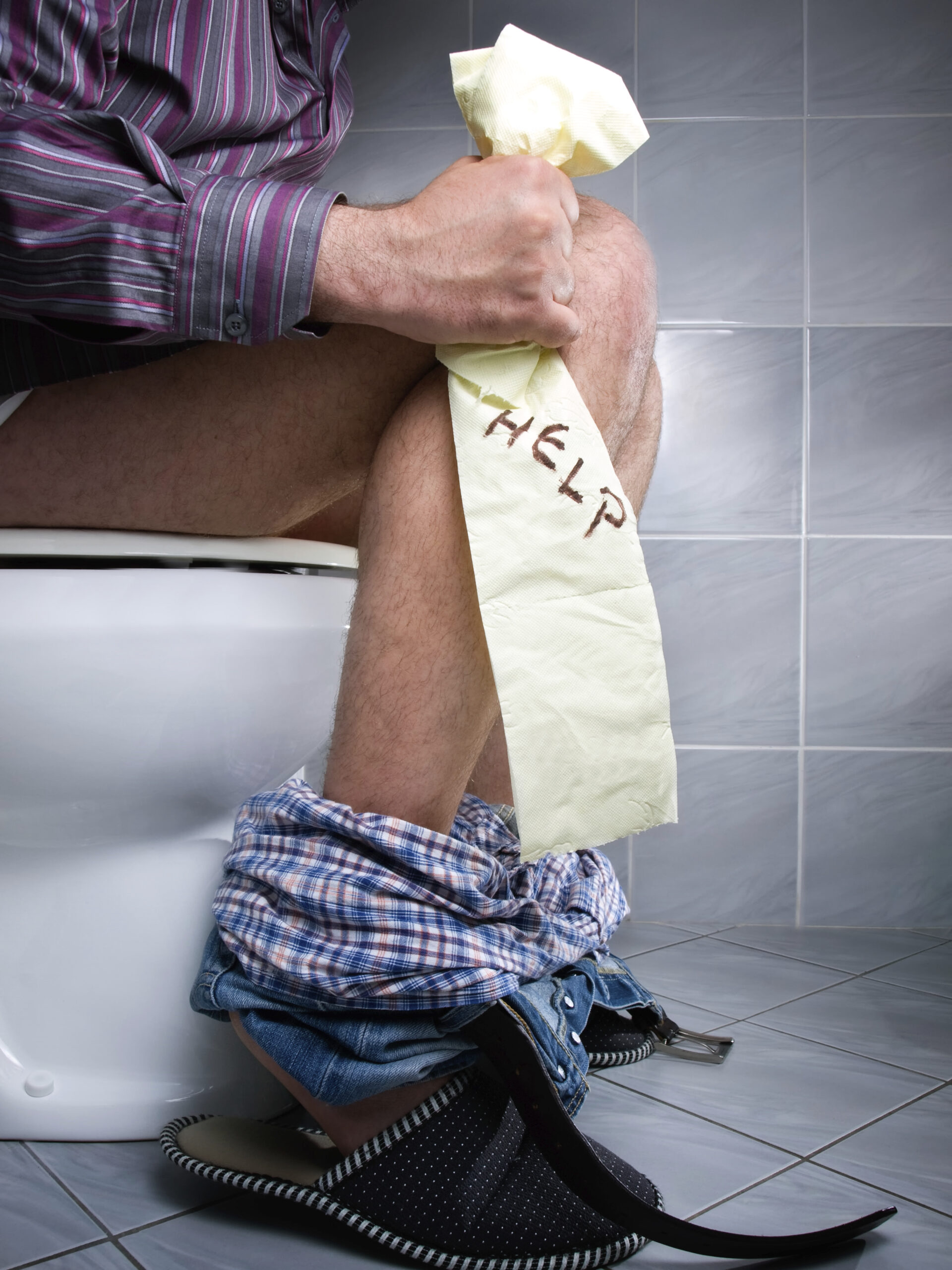Pilonidal Disease/Cysts
What are Pilonidal Cysts?
Pilonidal cysts are not really cysts but infected hair follicles located along the tailbone. They may lead to infection, abscess, and pain over the tailbone.
Causes
Some of the causes of pilonidal disease includes a family history for pilonidal disease, a large amount of sharp hair in the area of the tailbone, activities that lead to increased friction (bicycle or horseback riding), the depth or shape of the cleft, or other skin problems like acne, cysts, eczema, or boils. As the skin pores in this area become stretched out of place they allow dead skin, hair, sweat, and clothing lint to occlude the pores and the blocked follicles filled with secreted oil and debris become infected. The enlarged pores are called pits.
How do I Know if I Have Pilonidal Cysts?
Pilonidal cysts appear as small holes in the skin and ingrown hairs over the tailbone. There are more than 200,000 cases seen per year in the US. Although it occurs most frequently in the 16-26 year range it can occur at any age. As the infection progresses it can lead to severe pain and an abscess over the tailbone. The infection can cause multiple tracts or pilonidal sinuses that cause the infection to spread leading to itching or foul smelling drainage in the area between the clefts of the buttocks.
Infected pilonidal disease may present as a painful lump over the tailbone. This is a pilonidal abscess and needs drainage by an expert. In others there may be a chronic drainage that may smell and cause itching. Some people have an intermittent lump that drains occasionally. Women may have flare-ups around their menstrual cycle.
Treatment
We provide expert care for patients with pilonidal cysts. Our medical director, Carmen Fong, MD, is a double board certified Colon and Rectal Surgeon and General Surgeon. She has many years of experience caring for patients with pilonidal cysts.
Patients with minor skin pits may have them cleaned out in the office under local anesthesia. The area should be kept clear of hairs to promote healing. Pilonidal excision surgery is done in an operating room under anesthesia. If necessary we would refer you to another surgeon.
Modern pilonidal surgery involves using incisions off of the midline. Pits are cleaned and closed. Sinuses are removed. For more extensive pilonidal disease or failures of previous surgery we recommend a Cleft Lift procedure. The disease tissue is removed and the healthy tissue is moved over to the side and closed with sutures. The cleft is flattened reducing the risk of recurrence.
Dr. Fong is the leading expert on the Neolaser office treatment of pilonidal cysts. This new treatment can help avoid painful surgery in most patients. Call us today at (770) 442-3117 to set up a consultation with Dr. Carmen Fong, MD, FACS.
Pilonidal Disease/Cysts are ONLY treated by Dr. Carmen Fong, MD, a double board certified Colon and Rectal Surgeon and General Surgeon. She has many years of experience caring for patients with pilonidal cysts.
Dr. Fong sees patients in:
Call us today at (770) 442-3117 or request an appointment online.
Neolaser now in Atlanta



About 1 in 20 Americans have hemorrhoids. You are not alone.


